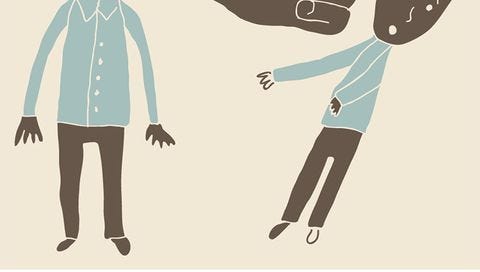Verbal and Social bullying- Words can hurt too.
Even temporary words can have a permanent impact on someone's life.

One of the most vivid memories I have from my school life is being called black and a classmate asking others to stay away from me, lest they will all turn black.
One of the most common forms of bullying is verbal and social bullying. What’s interesting about this is that oftentimes the bully doesn’t even realize that their actions and words are harming somebody. Which is why it is even more important to talk about it.
So, What is verbal and social bullying?
Verbal bullying includes name-calling, insults, teasing, intimidation, homophobic or racist remarks, or verbal abuse. In the above case calling someone black because of their skin color is a case of verbal bullying.
Social bullying is often harder to recognize and can be carried out behind the bullied person’s back. It is designed to harm someone’s social reputation and/or cause humiliation. In the above case asking others to stay away, is a case of social bullying.
That sounds horrible. Why would someone do that?
Ignorance- As mentioned earlier, sometimes the bully does not realize that their words can impact someone so much. They see it as playful teasing and a way to climb the social ladder.
Ego boost - Once someone has the power to ruin someone’s reputation they use it as a tool to intimidate others. This gives them a sense of authority and makes them feel good about themselves.
Attention- In verbal bullying the victim’s and the bystander’s reaction is instant. The victim may show signs of embarrassment while the bystander may applaud and give attention to the bully. The bully enjoys the attention they get as it makes them feel recognized.
If this is not stopped, What impact can it have?
Insecurity- The bullied feels constantly insecure and on guard. Even if they are not actively being bullied, they are aware that it could start anytime. It has a big mental and emotional impact—such as feeling unaccepted, isolated, angry, and withdrawn. They are always wondering how they can do better and how they can escape a bully's notice.
Adult life- One of the most disturbing aspects is the inability for the bullied to find closure even after the bullying has stopped, because of the scars it leaves. It creeps into adult life and it’s difficult to stop the flashbacks.
Physical effect- Constant anxiety and living in fear can have physical effects. It can lead to loss of sleep, eating disorders, palpitations, and chronic pain.
How can you prevent this?
Word-It Out - Help your child express disapproval in a healthy manner. Talk about how every person is different — the way we dress, look, talk, etc. — and just because someone is unlike us in some way, it doesn't mean they should be made fun for it. If they disagree with something they can state their opinion politely.

Develop empathy - Help a child picture themselves in someone else’s shoe. This will help them to be mindful of their words. Use the wrinkled heart activity or the rotten apple activity to communicate the impact their words can have.

Model it out- Children pick up what they see. Remember to treat others with respect and use the correct choice of your words. When going to a restaurant or standing in a queue treat everyone with equal respect.
Express- Often times the bullying continues because the victim is unable to speak up. Teach your child to express their feelings and how others are impacting the. For example “You called me black, made me feel upset and horrible. Please stop.” This will make the bully aware of their words.

Bullying vs. Playful teasing- Help your child understand the difference. The best test for whether or not teasing is friendly is if the person on the receiving end finds it funny and is laughing along. If the person being teased is not laughing, the teasing has fallen flat and an apology may be in order.
Remember unlike actions, words can have a long-lasting impact. It’s important to teach children to communicate in a kind and empathetic manner.



